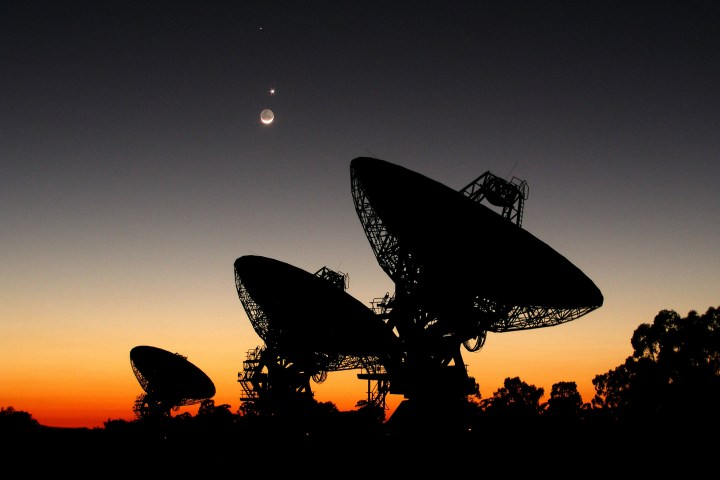
The scientific community has been perplexed by these enigmatic signals for the past 10 years. Currently, the explanation behind these FRBs range from outbursts of neutron stars to some sort of propulsion system used by an alien civilization on the opposite side of the universe. Some have even suggested these signals are the result of dark matter — another space thing we know very little about — smacking into black holes.
In 2015, researchers once again “heard” an FRB known as FRB 121102 that was first observed in 2012. Just last week, UC Berkeley postdoctoral researcher, Dr. Vishal Gajjar, found FRB 121102 blipping yet again. Gajjar used the SETI Breakthrough Listen program at the Green Bank Telescope in West Virginia to make the discovery. Over the course of five hours of observation across the entire 4 to 8 GHz frequency band, Gajjar and the team uncovered 15 “new” pulses coming from FRB 121102. But what does it mean?
“The possible implications are two folds,” Gajjar explained to CNET. “This detection at such a high frequency helps us scrutinize many (of FRB 121102’s) origin models. The frequency structure we see across our total band of 4 to 8 GHz also allows us to understand the intervening medium between us and the source.”
According to Gajjar, the repetitive nature of this particular FRB and the series of hyperactivity may rule out the colliding black holes origin hypothesis. A more probable explanation could involve pulsars, however, what is exactly emitting these powerful signals is still largely a mystery.
“As the source is going into another active state means that the origin models associated with some sort of cataclysmic events are less likely to be the case of FRB 121102,” explained Gajjar. “It should be noted that they can still be valid for other FRBs.”
The SETI team has requested other researchers to take advantage of this current FRB 121102 heightened activity window. The latest findings on FRB 121102 and the more than 400 terabytes of data from the recent observation will be more throughly detailed in a forthcoming report. While the jury is still out on FRBs, we’re still patiently waiting for the response to the interstellar Arecibo Message radio signal we transmitted into the cosmos in 1974. Perhaps when the aliens on the other side of the universe receive that, they’ll be equally as perplexed and intrigued…
Editors' Recommendations
- Astronomers detect weird ‘heartbeat’ pulse of radio waves
- Strange radio burst discovered in Milky Way for first time, source identified
- Astronomers detect strange transient radio pulses repeating in 16-day cycle


